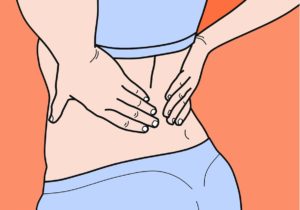Codeine is most commonly found in cough syrup, although it is also an opioid used to relieve mild to severe pain. It is a naturally occurring chemical that accounts for around 2% of opium and is the most widely used opioid in the world.
Though it is used in cough syrup to help suppress the need to cough, there isn’t enough data to support this claim. Codeine is actually more effective for treating diarrhea, especially when used to treat the symptoms of irritable bowel syndrome.
When ingested, the liver converts codeine into morphine. When codeine is broken down, it affects the brain’s reward region, causing sensations of pleasure and well-being, among other things. As a result of these effects, codeine abuse has become a widespread, serious problem in many countries.
Let’s take a look at the warning signs of codeine addiction, and the symptoms of codeine withdrawal.
Codeine Addiction
Because it is an opiate, it is easy to get addicted to codeine. Due to how addictive it is, cough syrups containing codeine are usually only available over the counter at pharmacies and are not readily available on store shelves.
Some countries also track client purchases of medications containing codeine, electronically recording each transaction in order to measure how much each individual buys. In the United States, legal limitations on codeine are based on the drug’s concentration in each medicine. Cough syrups are classified as either Schedule III or Schedule V, depending on the formula.
Opiate addiction can develop fast and is extremely difficult to break. The way a person reacts to codeine and develops tolerance to it is determined partly by body chemistry – some people break down the medication faster than others.
Opioid abuse and addiction have been prevalent for many decades, and as a result, significant studies have been conducted on codeine addiction and treatment.
Common Risk Factors for Codeine Addiction
Because codeine is used to treat so many common health problems, such as coughs, diarrhea, and pain, just about anyone can become addicted to it. According to a study published in the 2013 edition of Addictive Behaviors, men, Native Americans and Hispanics, students from metropolitan areas, and LGBT people are more prone to misuse codeine. This study focuses on the culture of “purple drank” in the southern United States, a typical slang moniker for syrups containing codeine combined with soda or alcohol. The substance has been mentioned in southern rap music and is even linked to some professional athletes.
Young individuals tend to be far more inclined to seek out codeine drugs for recreational purposes. These are often young people who have had little to no prior experience with drugs and wish to begin with what they believe to be a “safe” substance. According to the Global Information Network on Drugs, while codeine converts to morphine in the body, it is only 8-12 percent as potent as pure morphine. When these people develop a tolerance to codeine and are unable to get a euphoric high, they may turn to harsher opioids such as Vicodin or heroin.
The most worrying trend is teenage usage of prescription opioids, with 467,000 American adolescents utilizing these medicines for nonmedical purposes in 2014. Of these, 168,000 were thought to be addicted.
People who abuse multiple drugs are also at risk of abusing codeine since it is frequently taken with cannabis or alcohol. Users of more potent opioids, such as heroin, may use codeine to alleviate withdrawal symptoms, whether they are attempting to quit or their access to the more potent opioids has been cut off.
Even if it does not generate a euphoric high, consuming a less potent opioid stimulates the brain’s reward center, soothing cravings and lessening physical withdrawal symptoms. This is not a safe approach, and medical detox is always necessary for heroin or prescription painkiller withdrawal.
Even people with a prescription for opioids may potentially develop an addiction. This is possible even if the individual strictly follows the usage instructions, although it is less common.
When it comes to less potent opiates like codeine, legal users may be unprepared for the addictive effects and may be caught off guard when they discover they can’t get through the day without the drug. This usually occurs when tolerance develops, and the doctor either prescribes a greater dose or the person self-medicates with bigger doses — both of which are considered drug abuse.
Signs of Codeine Addiction
There are several significant indicators of opioid dependence in any drug, but nausea is the most prevalent adverse effect of codeine-containing treatments, particularly cough syrups. Those who take more than the advised amount of one of these drugs are more likely to experience nausea. As a result, they may need to frequently use anti-nausea drugs.
Other side effects of codeine addiction include:
- Stomach pain
- Constipation
- Itching
- Slowed breathing
- Changes in vision
- Anxiety or depression
- Mood swings
- Drowsiness
- Sleeping more than usual
- Decreased appetite
- Weight loss
- Clammy hands or feet
Codeine misuse can lead to an increase in lung infections, intestinal problems, sleep issues, irregular heart rhythm, and possibly brain damage over time. Aside from the physical repercussions, codeine addiction has a significant impact on quality of life.
Relationships and duties deteriorate as the individual becomes increasingly focused on getting and using codeine. The person may lose friends, experience problems with family members, and have difficulty with their daily responsibilities. Constant tiredness and mood fluctuations make it difficult to concentrate.
Codeine Withdrawal Symptoms
When a codeine addict quits using the substance, they will suffer withdrawal symptoms. This is due to changes in the body and brain as they try to acclimate to the continual presence of the medication until they can no longer operate effectively without it.
The following are some of the most common codeine withdrawal symptoms:
- Diarrhea
- Loss of appetite
- Weight loss
- Muscle pains
- Runny nose
- Watery eyes
- Nausea
- Vomiting
- Stomach cramps
For others, these symptoms may resemble a nasty case of the flu. It is usually considerably worse for long-term, heavy users and may necessitate medical intervention.
If you suspect that you or a loved one are addicted to codeine, you are advised to seek professional help before attempting to wean off it. Though withdrawal may not be life-threatening, the symptoms can be uncomfortable and can lead to relapse.
In addition to relapse meaning that you have not been able to overcome addiction, relapse can also be dangerous. Even a brief hiatus from using an opioid can result in lowered tolerance, and starting to use it again at the same dose as before withdrawal can lead to a fatal overdose.
It is best to always seek help from a professional drug rehab in your efforts to overcoming opioid addiction.





